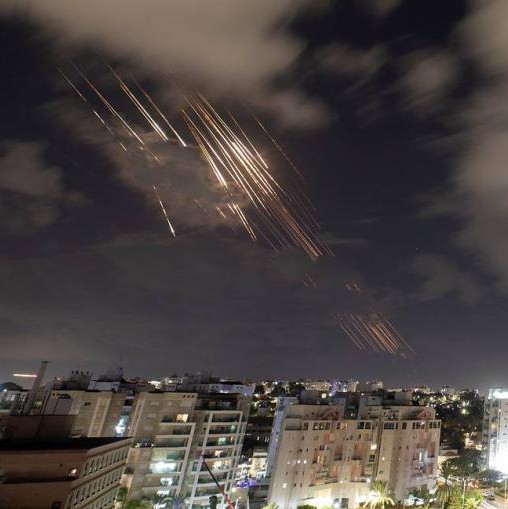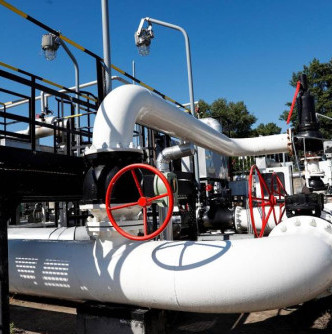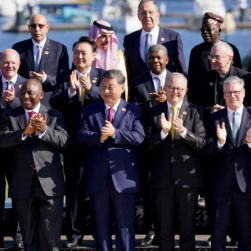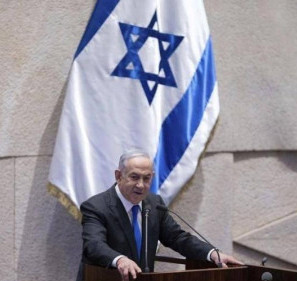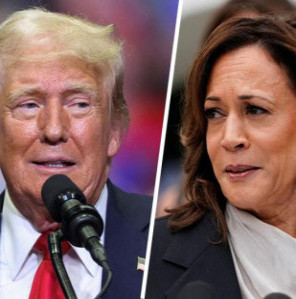
Iran and the Eurasian Economic Union have signed a long-awaited free trade agreement; Russia’s liberation of Maryinka pushes Ukrainian artillery further west away from Donetsk and will likely have a critical impact on the future course of the special military operation; and India has no plans to forsake its cooperation with Russia due to Western pressure. These stories topped Tuesday’s newspaper headlines across Russia, according to TASS News Agency.
Media: Iran, Eurasian Economic Union sign long-awaited free trade agreement
The signing of a free trade agreement between Iran and the Eurasian Economic Union (EAEU) was the biggest news to come out of the meeting in St. Petersburg of the Supreme Eurasian Economic Council. Moscow and Tehran had been discussing the deal for several years, Nezavisimaya Gazeta writes.
"The free trade agreement between the EAEU countries and Iran will greatly benefit Russia because Russian goods account for 70% of the EAEU’s trade with third countries on average," said Maxim Chereshnev, member of the Business Russia General Council and chairman of the board of the Council for the Development of Foreign Trade and International Economic Relations. According to him, the Iranian market "is rather large, and, unlike in other markets, companies from other foreign countries are poorly represented, thus reducing the level of competition that Russian companies will face."
"Although Iran has been under sanctions for nearly 45 years, it has things to offer. Almost all economic sectors are properly developed in the country. Iran is one of the [world’s] biggest gas producers and leading oil producers. Its heavy industry is pretty well developed. Iranian-made motor vehicles can also carve out a solid niche for themselves in the Russian market. Joint ventures can also be set up. The country has a highly developed sector for manufacturing medicines," Natalya Nikonorova, member of the Russian Federation Council (upper house of parliament) Committee on Foreign Affairs, told Izvestia.
According to information at the newspaper’s disposal, trade between the five EAEU member states (Armenia, Belarus, Kazakhstan, Kyrgyzstan, Russia) has grown by 87%, while trade with third countries has risen by 59%. The free trade agreement will allow the EAEU to triple trade turnover with Iran, which is expected to grow to $18-20 bln from the level of $6.2 bln reported in 2020. The agreement will facilitate boosting exports of agricultural items to Iran, along with ferrous and non-ferrous metal products, oil and gas products, timber goods and machinery. As for Tehran, it may export more textile goods and fruits and vegetables to Russia. Concluding the agreement makes particular sense given pressure from the unprecedented wave of sanctions being imposed by the West, Russian politicians say.
Izvestia: Russia liberates Maryinka, pushing Ukraine’s artillery further west from Donetsk
Russian Defense Minister Sergey Shoigu has informed President Vladimir Putin of the liberation of Maryinka, a Donetsk suburb that had served as one of the Ukrainian armed forces’ key lines of defense in the Donbass. Over the past eight years, the Ukrainian army had turned the town into an incredibly strong fortified area with dugouts, underground tunnels and a significant arsenal of artillery systems that Kiev’s forces have used to carry out non-stop shelling attacks on the city of Donetsk, Izvestia notes.
According to the defense minister, the liberation of Maryinka, where each of the city’s 3,000 buildings "was in fact a heavily fortified position," has made it possible to push the line of contact significantly further to the west to more effectively protect Donetsk from the enemy’s artillery and missile strikes.
While experts warn that it is premature to declare the complete defeat of Ukrainian forces in the Donetsk area, the liberation of Maryinka will allow Russian troops to build on this major success. Military expert Vladislav Shurygin points out that the Ukrainian military described Maryinka as an impregnable fortress similar to Artyomovsk (known as Bakhmut in Ukraine), which was liberated in the early summer of this year. Shurygin noted that the Ukrainian forces stationed in Maryinka had been shelling the peaceful civilian population of Donetsk with mortars. However, even after the town’s liberation, the threat of everyday shelling attacks still exists for residents of the Donetsk People’s Republic’s (DPR) capital.
"Clearly, the liberation of Maryinka means a breakthrough in Ukraine’s current line of defense. However, it won’t change much for Donetsk because Ukrainian forces have switched to larger-caliber and longer-range Western-made artillery systems and will still be able to hit the city. In order to remove the threat of shelling attacks [altogether], the Ukrainian armed forces must be pushed 50-60 kilometers away from the city," Shurygin explained.
"The enemy’s defense has been broken in tactical depth. This means that it’s now possible to conduct tactical operations, including encircling and de-blocking missions," military expert Viktor Murakhovsky said. "I believe that our forces will now focus on Avdeyevka. Once it’s free, the army will need to reach a fortified line connecting Konstantinovka, Kramatorsk and Slavyansk, which is the last Ukrainian line of defense in the DPR," the analyst added.
Nezavisimaya Gazeta: India not planning to stop working with Russia due to West’s pressure
Indian Foreign Minister Subrahmanyam Jaishankar has arrived in Russia. New Delhi has emphasized that the ties between India and Russia have stood the test of time and remain stable. This is a critical assertion amid Western media speculation about the possible reasons why Moscow and New Delhi did not hold a summit in 2023. The reality is that the two powers continue to maintain cooperation on the international stage with Russia remaining India’s main arms supplier, Nezavisimaya Gazeta writes.
The top Indian diplomat’s Russia trip holds great significance in the current situation. The two countries’ leaders last held a summit in New Delhi in December 2021. However, after the launch of Moscow’s special military operation in Ukraine, Russian President Vladimir Putin’s foreign visits have been somewhat restricted. He did not attend the G20 summit in New Delhi in September, where he could have held in-person talks with Indian Prime Minister Narendra Modi. However, since there is a pause in top-level meetings, much will depend on Jaishankar’s mission, Indian media outlets write.
Indian journalist Vinay Shukla believes that "the two leaders will eventually meet next year but it will happen after both Russia and India hold their elections." "The United States would like India to take its side on the Ukraine issue but it won’t work. Russia continues to provide S-400 [surface-to-air] missile [SAM] systems and other weapons to India," the expert added. While in Russia, the Indian foreign minister will also address economic issues. According to the Indian Ministry of Commerce, a surplus in Russia’s trade with India emerged in the spring of 2022, with billions of rupees currently being held in Russia’s accounts at Indian banks. Jaishankar and Russian Deputy Prime Minister Denis Manturnov will probably discuss ways to deal with the excess amount of rupees generated for Russia from Indian purchases of Russian oil.
In this regard, Shukla noted that "when India buys oil at $60 [per barrel] and below, there is no problem because payment is made mostly in UAE dirhams or Hong Kong dollars." "However, since Russia does not accept Western sanctions and is unwilling to sell oil below $60 [per barrel], the two countries’ governments don’t disclose the payment mechanism they use. As far I know, India pays Moscow in rupees when the oil price is above $60. Supplies of the S-400 SAM systems are also paid for in rupees. This is where the [surplus] rupee assets come from. Still, Western media outlets, namely Bloomberg, are deliberately overhyping their size," the journalist said.
Media: West likely to fail in stratagem for stirring up instability in Serbia
Serbian opposition supporters once again took to the streets in downtown Belgrade to protest on Monday. Meanwhile, President Aleksandar Vucic pledged not to allow anyone to create instability in the country, emphasizing that opposition protests would lead to nothing. Vucic made it clear that an attempt to storm Belgrade city hall had been pre-coordinated with assistance from external forces, Rossiyskaya Gazeta writes.
The Serbian authorities have been reluctant to join the West’s policy of sanctions on Russia despite Belgrade’s plans to seek European Union membership; they also do not recognize Kosovo. The US and its allies have been signaling in an increasingly aggressive manner that they wish to compel Belgrade to make a clear choice. The very existence of a European country that attempts to pursue a policy independent of Washington is seen as a challenge.
Political scientist Vladimir Krsljanin, a former adviser to the Serbian Foreign Ministry, is confident that the authorities are in full control of the situation in the country and that "no Maidan-like events will take place here." According to him, "the West won’t be able to repeat the same scenario because the international situation is completely different now; however, they will continue to use various means to sow instability in the country."
Russian Ambassador to Serbia Alexander Botsan-Kharchenko told Izvestia that the protests were based on the technology of "Maidan revolutions," with the aim being to bring the opposition to power. However, "no Maidan schemes will work" as they are being countered, the envoy added.
Experts believe that the Serbian authorities are highly likely to cope with the protests as they do not enjoy any widespread public support. "In my view, they are unlikely to expand because there is no longer a basis for them, which used to exist in the previous years of protests. Many don’t support Aleksandar Vucic, particularly in terms of his stance on Kosovo, but the entire society is not ready to take to the street for that reason," Yelena Ponomaryova, professor at Moscow State Institute of International Relations (MGIMO University), explained.
Kirill Borshchov, correspondent for the Balkanist web portal, agrees that it is incorrect to say that the current protests reflect the views of the majority. The opposition garnered slightly over 20% of the vote at all levels in recent elections, while the ruling coalition received over 40%. There are also other parties that support neither the opposition nor the government, which gained a substantial number of votes, the expert noted.
Rossiyskaya Gazeta: EU remains largest Russian gas importer in 2023
The European Union remains the largest importer of Russian gas in terms of both pipeline and liquefied natural gas (LNG), Rossiyskaya Gazeta writes, citing data from the Finland-based Center for Research on Energy and Clean Air (CREA).
Alexey Grivach, deputy head of the National Energy Security Fund, points out that the import of Russia’s pipeline gas stabilized at 2-2.5 bln cubic meters last September. The thing to remember is that Europe has been lucky with weather for the past two years. Neither Eurasia’s west nor the continent’s east has seen abnormally cold weather. The countries of the Asia-Pacific region did not draw on LNG supplies and even took advantage of the EU’s high demand in order to resell certain amounts of LNG to European nations.
In 2022-2023, gas consumption was reduced to the lowest level that could be achieved in the short term, Ivan Timonin, senior consultant at the Implementa company, said. Besides, it can be viewed largely as a forced measure stemming from limited amounts of LNG on the global market. That said, EU countries should not be expected to see a dramatic change in consumption in 2024. Moreover, it is also possible that demand will rise slightly by 5-10 bln cubic meters amid a decline in the LNG market shortage and a corresponding drop in prices.
Russian LNG exports to the EU may even grow in 2024. Almost all liquified natural gas from Russia’s Yamal Peninsula and the Baltic Sea region has been supplied to the EU for the past two years, Grivach specified. Much will depend on political and weather-related events, as well as on the ability of Russian companies to launch LNG exports from the first line of the Arctic LNG-2 plant despite US sanctions. If Arctic LNG-2 becomes commercially operational, Russia will probably account for the largest increase of LNG supplies to Europe.
TASS is not responsible for the material quoted in these press reviews
